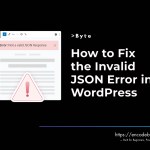Automated content generation in WordPress can be achieved using various tools and plugins. Here’s a step-by-step guide to help you get started:
Contents
1. Define Your Content Needs
Before implementing automated content generation, clarify what type of content you need:
- Blog posts
- Product descriptions
- News updates
- Social media posts
2. Choose a Content Generation Tool
Several tools and plugins can help automate content generation. Some popular options include:
- AI-Powered Plugins: These plugins leverage AI to generate content based on your input.
- ChatGPT Plugins: Integrate ChatGPT via APIs or dedicated plugins to generate content or assist with writing.
- ContentBot: An AI writing assistant that can generate blog posts, product descriptions, and more.
- Content Aggregation Plugins: These tools pull content from various sources and republish it on your site.
- WP RSS Aggregator: Aggregates content from RSS feeds and displays it on your site.
- Feedzy RSS Feeds: Automates content import from RSS feeds.
- Content Spinning Tools: These tools modify existing content to create variations.
- Spin Rewriter: Spins articles to produce unique variations.
- WordAi: Uses AI to rewrite and enhance content.
3. Install and Configure Plugins
- Install the Plugin:
- Go to your WordPress dashboard.
- Navigate to Plugins > Add New.
- Search for the plugin you want (e.g., “ChatGPT,” “ContentBot,” “WP RSS Aggregator”).
- Click Install Now, then Activate.
- Configure the Plugin:
- Each plugin will have its own configuration settings. Generally, you’ll find settings under Settings or a dedicated menu for the plugin.
- Set up the content generation rules, API keys (if needed), and other preferences.
4. Integrate AI (if using an AI tool)
For AI-based content generation:
- Get API Access:
- Sign up for the API service (e.g., OpenAI for ChatGPT).
- Obtain your API key from the service provider.
- Connect API to WordPress:
- Some plugins allow direct API integration. Enter your API key and configure settings as needed.
- For custom integration, you might need to use code snippets or custom plugins to connect the API.
5. Create and Schedule Content
- Automate Posting:
- Use tools like WP Scheduled Posts or Editorial Calendar to automate the publishing schedule for your generated content.
- Set Rules and Triggers:
- Define rules for when and how often content should be generated and published. For instance, generate a new blog post every week or automatically update product descriptions.
6. Monitor and Adjust
- Review Generated Content:
- Regularly check the quality of the generated content to ensure it meets your standards and provides value to your readers.
- Adjust Settings:
- Based on feedback and performance, adjust the content generation settings to better fit your needs.
7. Ensure Compliance and Quality
- Avoid Duplicate Content:
- Ensure that the generated content is unique to avoid SEO penalties.
- Check for Accuracy:
- Automated content can sometimes be inaccurate or misleading. Review content for accuracy and relevance before publishing.
By following these steps, you can effectively implement automated content generation on your WordPress site, saving time and maintaining a steady flow of content.










